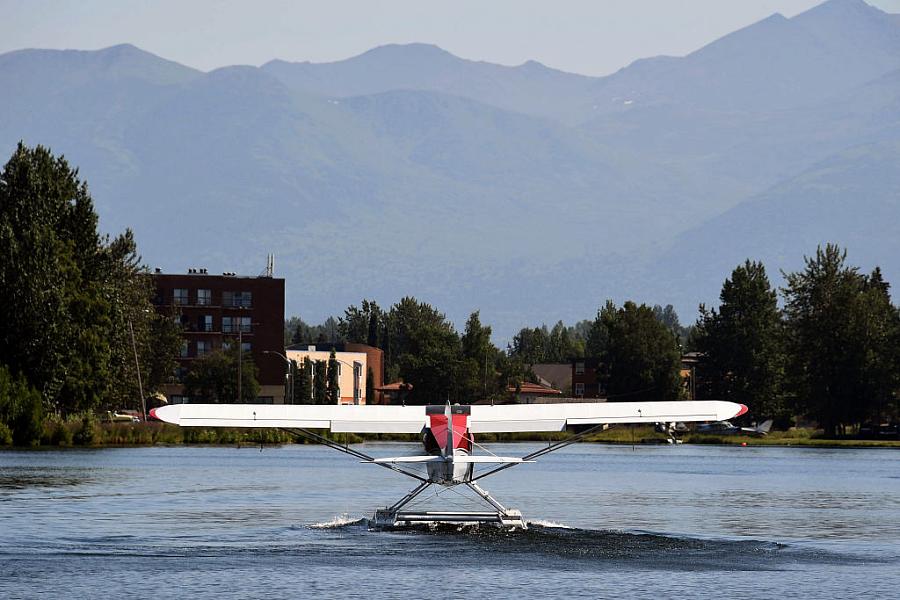When the hospital is 800 miles away: Pregnant in rural Alaska during COVID-19

(Photo by Lance King/Getty Images)
For a project set against the backdrop of COVID-19, the field is the living room. It’s also the office and the production studio. But when that living room is in a tiny town of just over 2,000 people at the northern end of the longest, deepest fjord in North America, surrounded by glacier-carved mountain ranges for hundreds of miles, the field is pretty far, well, afield. It’s also 100 miles from the nearest hospital, but only by small aircraft or ferry, because there is no road. This is why I was writing in the first place.
My project was to report on the experience of women from rural and remote parts of Alaska who were pregnant when the pandemic hit. Labor is not an event that can be easily cancelled or delayed, like most events were in 2020. Women in rural and remote areas of Alaska travel long distances through remote territory to access specialized care. It’s already daunting, but as states rolled out pandemic travel restrictions and deaths mounted in city centers, Alaskans without ready hospital access had reason for concern.
Early in 2020, when the National Fellowship was announced, I planned for my grant to go towards the travel necessary to complete the story. I imagined my reporting experience would include travel to at least two communities other than my own, both about 1,000 miles away in other parts of Alaska, where I live. But as COVID-19 cases ticked up in Alaska, a remote state with limited hospital beds, it became clear that travel was a risk to my remote community and to the remote communities I hoped to visit. There was no way I could justify potentially passing COVID-19 to a pregnant woman who lives in a town without a hospital. I made my peace with reporting from the kitchen table and the couch.
For an audio reporter this posed a great challenge, since two key parts of the radio experience are high quality sound and being immersed in the ambient sounds around the reporter. Gathering high-quality sound is key: garbled “tape” from a long-distance call is too difficult for the listener to decipher. The message gets lost. There were seemingly endless challenges in 2020, but access to technology was not among them. Even the source who lives on a remote island in a community of about 500 people in the middle of the Bering Sea has a smart phone. And smartphones come preprogrammed with voice recording software. We had a conversation by phone, but my source recorded herself speaking to me, then emailed me the audio file. There may have been nearly 2,000 miles between us, but the tape was fine.
Without traveling, how do you find sources that live in hard-to-get-to places in the middle of a pandemic? My plan was to visit places like Bethel and Unalaska and host gatherings where I could connect with many women at once and get a feel for the community. The new plan was to reach out to the same community organizers and medical professionals, but by phone. I posted queries on social media. There was no coffee and doughnuts to lure participants, but responses poured in. I managed to speak with dozens of women from the most remote parts of Alaska who were open to sharing their stories.
I also encountered failure. Interviews with health providers — and access to sources in their care — fell through in areas extremely hard hit by the pandemic. For example, I was scheduled to do an interview at a “prematernal home” for pregnant women who live in remote parts of Interior Alaska. It’s a communal living house where women from indigenous villages in the Yukon-Kuskowim Delta region live for the month before their due dates. (The goal is to prevent a birth outside of the clinical setting.) My plan was to virtually visit the home via videoconference, with the help of staff from the regional hospital in Bethel. But in the fall, case counts in the YK Delta exploded. The hospital was full. No one could be spared to speak with me, let alone take me on a video tour and host interviews. That story got away — for now.
There were other challenges, too. I got a small taste of what the women I interviewed experience when they travel for specialized care when I had a health issue that necessitated several months of back-and-forth travel between my community, Haines, and Sitka, where there is a hospital with the necessary specialist. Travel, the clinical setting, and surgery are all more complicated against the backdrop of COVID-19. Quite simply, one health concern becomes two. The experience deepened my understanding and empathy during the reporting process, which was a positive outcome that counterbalanced the time and energy it pulled away from my project.
Then came December. As I prepared for the final edits and mixing process of my three stories, another disaster hit the small town where I live. Landslides and flooding destroyed homes, pulverized roads, and cut the town off from its fuel dock and airstrip. One landslide killed two young people. At one point, nearly a third of the town was on evacuation watch. As one of only two reporters for the single daily news source in the region, I was working nonstop for several weeks to get crucial public safety information to my community and updates to the rest of the state (with a go-bag by the door). The fellowship generously granted me an additional month to complete my project.
My biggest lesson from the field is persistence. Reporting in the pandemic is more important and more challenging than ever, so pushing through obstacles and disappointments is crucial. It is better to tell as much of the story as you can, than none at all.
Find Claire Stremple’s fellowship stories here.
